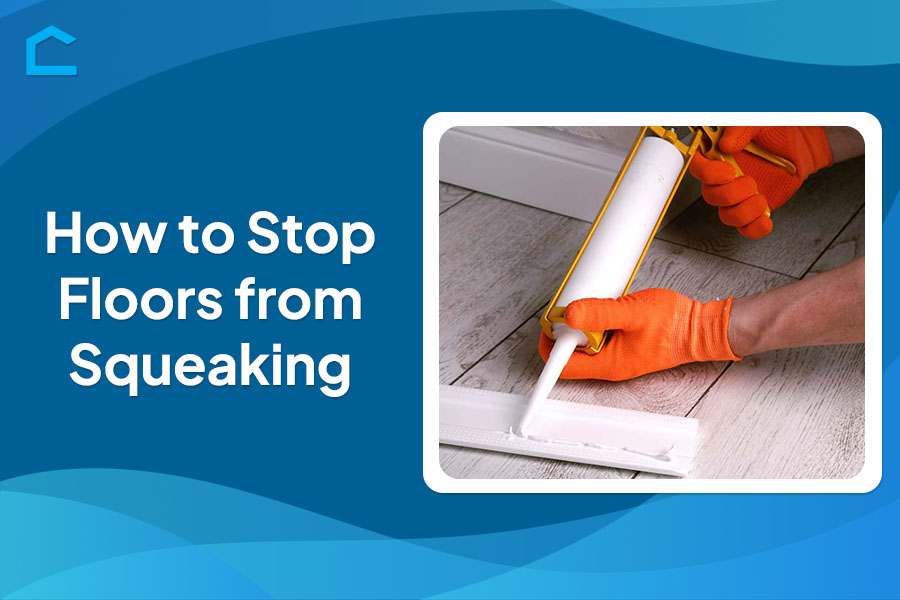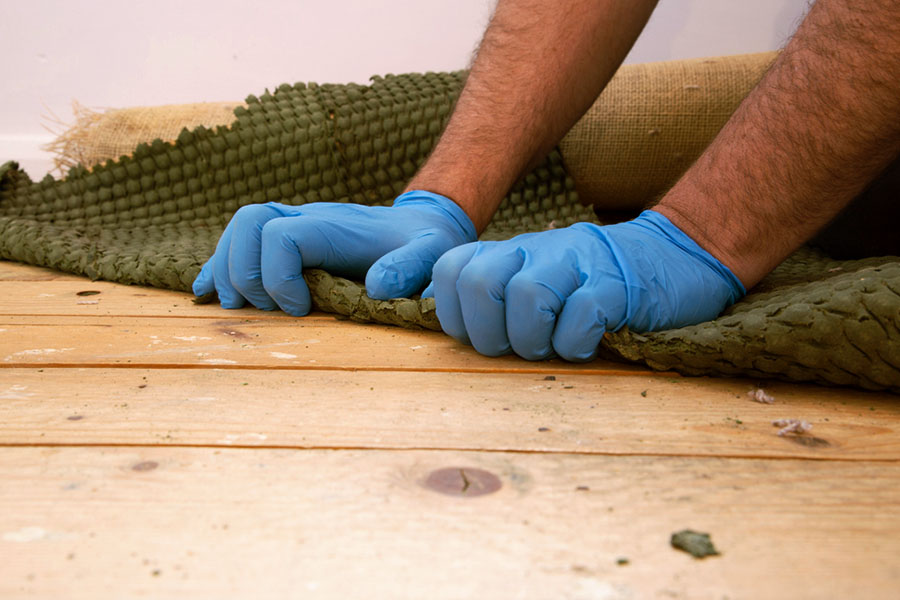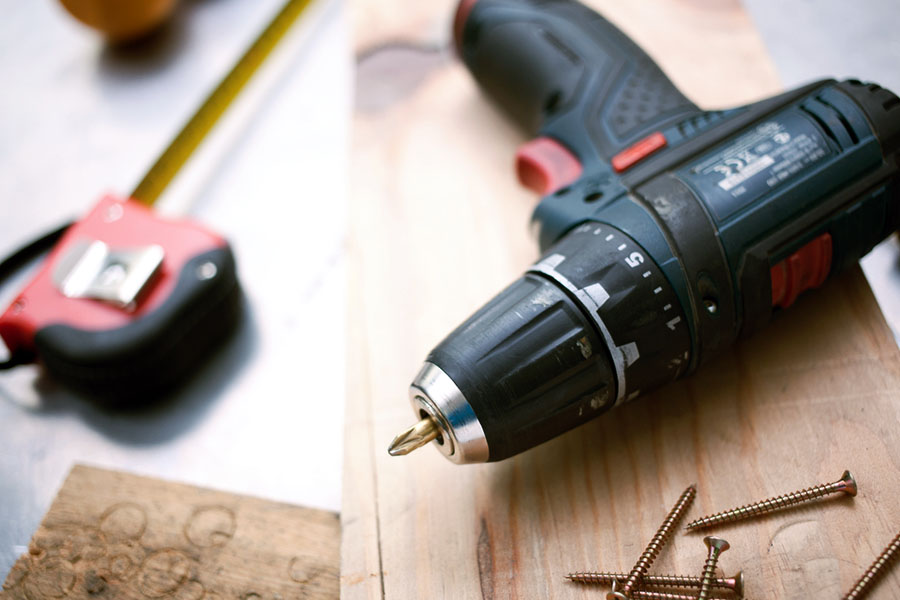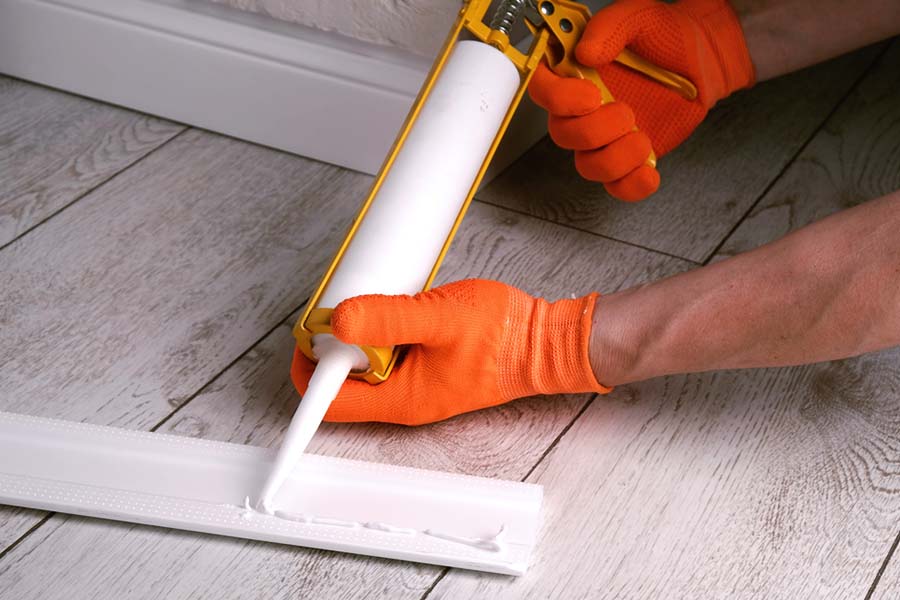How to Stop Floors from Squeaking

Does the sound of squeaky floors drive you crazy whenever you walk across a room? Those incessant creaks and groans can disrupt the tranquility of your home and become a persistent annoyance. Fortunately, effective ways exist on how to stop floors from squeaking.
This comprehensive guide offers practical solutions to diagnose and eliminate squeaky floors, regardless of the cause or severity. We’ll explore various techniques, from simple DIY fixes to more involved repairs, suitable for different flooring materials and underlying issues.
Whether your floors are squeaking due to loose subfloor components, improper installation, or natural settling over time, you’ll find step-by-step instructions to address the problem. Let’s discover how to deal with squeaky floors!

Source: shutterstock.com / Photo Contributor: rigsbyphoto
How to Stop Floors From Squeaking
To stop floors from squeaking, start by identifying the source of the noise. Often, squeaks occur due to friction between floorboards, subflooring issues, or loose nails.
One effective method is to locate the squeaky spots by walking around and pinpointing where the noise originates. Once identified, you can apply talcum powder, powdered graphite, or specialized lubricants into the joints between floorboards to reduce friction and eliminate the squeaking.
Moreover, tightening loose floorboards or subflooring and securing them with screws can help prevent movement and subsequent squeaks. For persistent squeaks, especially in hardwood floors, inserting shims or blocking between joists and subflooring can provide added support and stability, effectively eliminating the noise.
What Causes Floors to Creak?
Understanding the causes behind these noises can help in effectively addressing and fixing them. Here are the possible reasons why floors creak and explore potential solutions:
Subfloor movement
One of the primary culprits is subfloor movement. As a house settles over time, the subfloor can shift slightly, causing the floorboards above to rub against each other or the nails securing them. This friction produces those telltale squeaking sounds.
Loose floorboards
We may say loose floorboards are another frequent cause of squeaky floors. Air gaps can form if the boards were not properly nailed or glued down during installation, air gaps can form. When you walk across these loose boards, they knock against the subfloor or surrounding boards, resulting in creaks.
Other contributing factors
Other factors that contribute to floor squeaks include:
- Aging wood components – Wooden components can dry out and shrink over time, creating gaps and movements that lead to squeaks.
- Improper subfloor materials – Using subfloor materials that are inappropriate for the flooring type can lead to issues down the line.
- Humidity and temperature changes – Fluctuations in humidity and temperature can cause wood floors to expand and contract, resulting in squeaks.
Identifying the underlying reason for your creaky floors is key to determining the best solution. Whether it’s reinforcing the subfloor, removing and replacing damaged subfloor sections, re-nailing loose boards, or using specialized floor repair products, understanding the root cause guides the repair approach.
Methods to Stop Floor Squeaks
As mentioned, persistent floor squeaks can be annoying and frustrating, but several effective methods exist to address this common issue. These techniques might help you achieve quiet, squeak-free floors, from specialized hardware to simple household products.
Using specialized screws
One of the most reliable ways to stop floor squeaks is by using specialized screws designed specifically for this purpose. These screws feature unique threading and coatings. This allows them to tightly grip the subfloor and floorboards, preventing any movement or rubbing that causes squeaks.
The process involves locating the source of the squeak, and drilling a pilot hole through the floorboard. Then, driving the specialized screw through the floorboard and into the subfloor or joist below.
The screw’s design ensures a secure connection that eliminates any gaps or movement between the components. This effectively silences the squeak.
We advise you to follow the manufacturer’s instructions carefully. These screws often require specific drill bit sizes and driving techniques to ensure proper installation and maximum effectiveness.

Source: shutterstock.com / Photo Contributor: Sergey Mironov
Applying talcum powder or lubricants
For minor squeaks caused by friction between floorboards, a simple solution can be found in common household products like talcum powder or specialized lubricants. These substances act as a lubricant. They reduce the friction between the boards and prevent the rubbing that causes squeaks.
To apply talcum powder, we suggest you locate the source of the squeak and sprinkle a small amount of powder into the gap between the floorboards. Then, work the powder into the gap by walking over the area or using a putty knife to help disperse it evenly.
Specialized floor lubricants, often silicone-based, can be applied in a similar manner. You must follow the product instructions carefully, as some lubricants may require additional steps or precautions. This method works best for minor squeaks and may need to be reapplied periodically.
Installing cork pads
Cork pads can provide an effective solution for squeaks caused by floorboards rubbing against each other or the subfloor. These thin, adhesive-backed pads are placed between the floorboards and the subfloor, acting as a cushion that dampens sound and prevents friction. The installation process involves:
- Locating the source of the squeak.
- Carefully lifting the floorboard.
- Adhering the cork pads to the underside of the board or the subfloor beneath it.
We recommend you follow the manufacturer’s instructions for proper placement and adhesion. So, cork pads may help eliminate squeaks and provide additional insulation and cushioning. This can be beneficial in reducing impact noise and improving overall floor comfort.
How to Stop Floors From Creaking Under Carpet
Carpets may hide your floors from view, but it doesn’t mask the annoying creaks and squeaks that can occur when walking across certain areas. Addressing these noises under the carpet requires a bit more effort, but it’s well worth it for a quieter living space.
Locating squeaky areas
The first step is to identify the specific areas where the squeaks originate. This can be done by walking around the carpeted rooms and listening carefully for any telltale creaks or groans underfoot.
As you locate a squeaky spot, mark it with a piece of removable tape or a small object that won’t damage the carpet. This will help you pinpoint the exact areas that need attention.
Fixing squeaks under carpet
Using specialized screws
As discussed, one effective method for fixing squeaks under the carpet is to use specialized screws designed to secure the subfloor or floorboards tightly. These screws feature unique threading and coatings that allow them to grip the components firmly, preventing any movement or rubbing that causes squeaks.
To access the subfloor or floorboards, you’ll need to carefully cut away a section of the carpet and padding in the squeaky area. Then, following the manufacturer’s instructions, drill pilot holes and drive the specialized screws through the floorboards and into the subfloor or joists below.
Using adhesive
Another option is to use a construction adhesive or subfloor adhesive to secure the floorboards or subfloor in the squeaky area. This method works particularly well when gaps or separations between the components cause the squeak.
Again, you’ll need to cut away a section of the carpet and padding to access the area. Apply the adhesive according to the manufacturer’s directions, ensuring proper coverage and bonding between the components. We advise you to weigh or clamp the area until the adhesive has fully cured.

Source: shutterstock.com / Photo Contributor: Alisusha
Reinstalling carpet
Once you’ve addressed the squeaks, carefully reinstall the carpet and padding in the areas where it was cut away. Use a knee-kicker or power stretcher to ensure a tight, wrinkle-free fit. Also, take your time and follow proper techniques when working with carpet to avoid any visible seams or damage.
Conclusion
Eliminating squeaky floors can significantly enhance the comfort and tranquility of your living space. By implementing the solutions outlined in this guide, you can bid farewell to those irritating creaks and groans once and for all.
Whether you opt for specialized screws, lubricants, cork pads, or adhesives, these techniques offer effective ways to address the underlying causes of floor squeaks. Remember to carefully identify the noise source and follow the recommended installation procedures for the chosen method.
With a little effort and the right approach, you can learn how to stop floors from squeaking and enjoy a peaceful home environment free from disruptive squeaks underfoot. Say goodbye to the annoyance of squeaky floors and embrace the serene living space you deserve!
